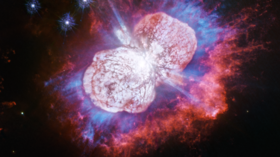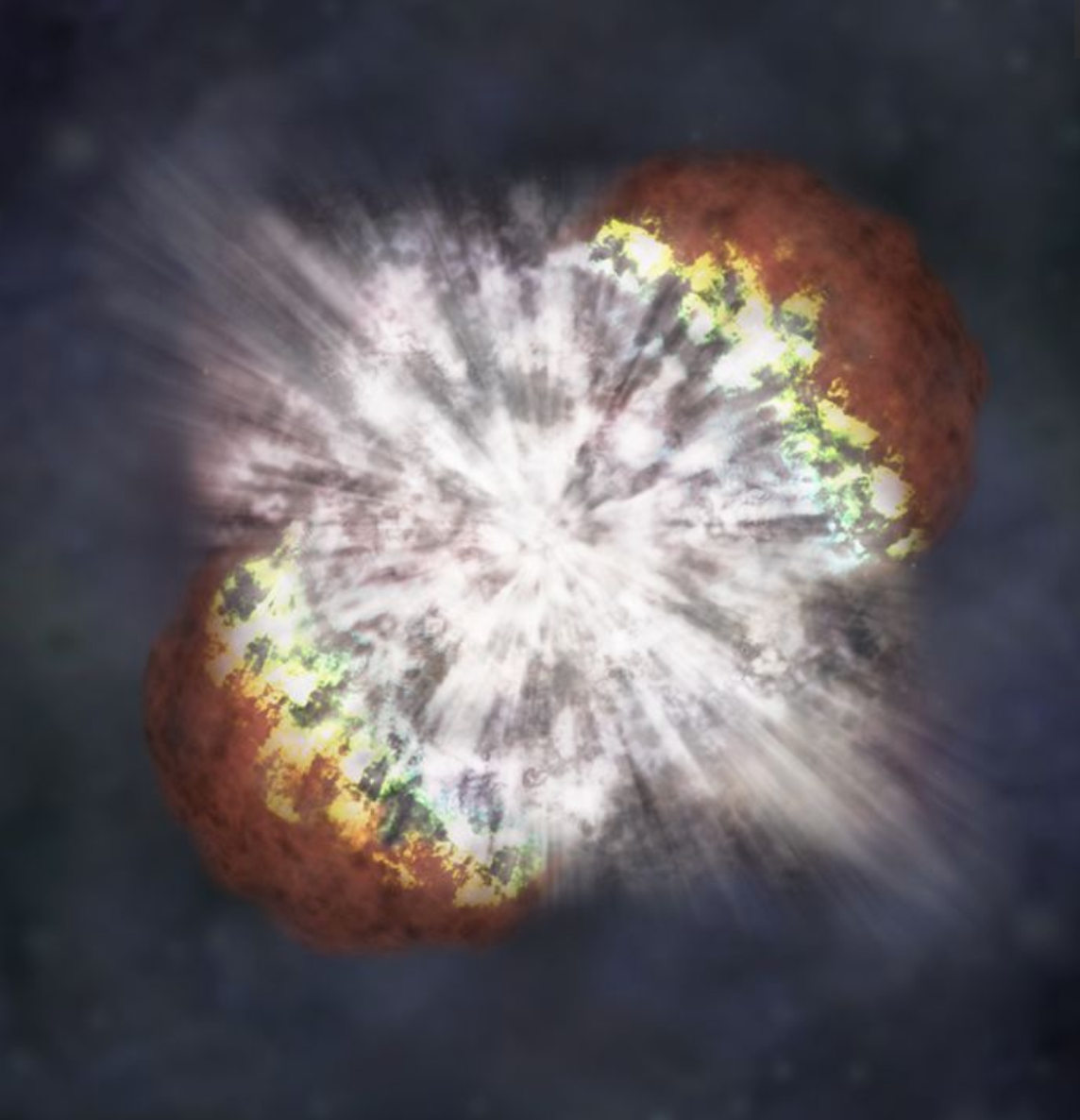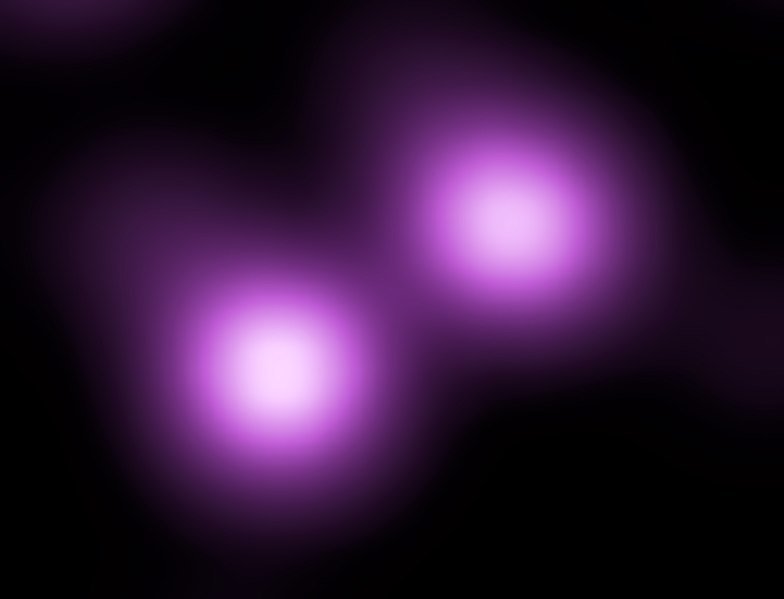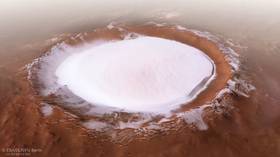One of the brightest explosions ever seen was actually a giant star EATING its neighbor – study

The record-setting stellar explosion SN 2006gy was 50 billion times brighter than our sun, with a blast so energetic it baffled the scientific community. Now scientists think they have uncovered what made it so incredibly bright.
The explosion, which became known as a 'hypernova,' occurred in September 2006 some 240 million light-years away in the Perseus constellation. Astronomers looked on in awe as the blast grew even brighter over the course of 70 days, completely outshining its host galaxy, in a cosmic event hundreds of times more powerful than a standard supernova.

Then, to add further intrigue to this immense detonation, scientists noticed mysterious emission lines radiating from the explosion about a year later, which could only occur if there were large amounts of iron in the area.
Iron could only really be floating around if the supernova was interacting with preexisting stellar material, say from a previously cannibalized white dwarf.
"A candidate scenario to explain this is [the] evolution of a binary progenitor system, in which a white dwarf spirals into a giant or supergiant companion star," researchers wrote, in a fresh study on the extraordinary detonation.
Binary mergers were once thought to be rare, occurring once every 10,000 years or so in our galaxy. When the stars do collide, they eject a vast cloud of gassy stellar material in their surrounding areas.

So, when SN 2006gy finally went hypernova, this gassy veil likely amplified the brightness of the blast to the unprecedented levels astronomers here on Earth witnessed.
While this explanation is purely mathematical in nature, scientists are keeping a close eye on the Eta Carinae star system 7,500 light-years from Earth. The binary pair has been exploding for the past several hundred years and has become the brightest star system in the Milky Way to date.
Scientists expect the pair to create their own hypernova blast at some point in the next 1,000 years, producing a truly stellar pyrotechnics display and potentially breaking current records all over again.
Also on rt.com Scientists discover 6 mysterious objects near supermassive black hole, unlike anything we’ve seen beforeThink your friends would be interested? Share this story!













